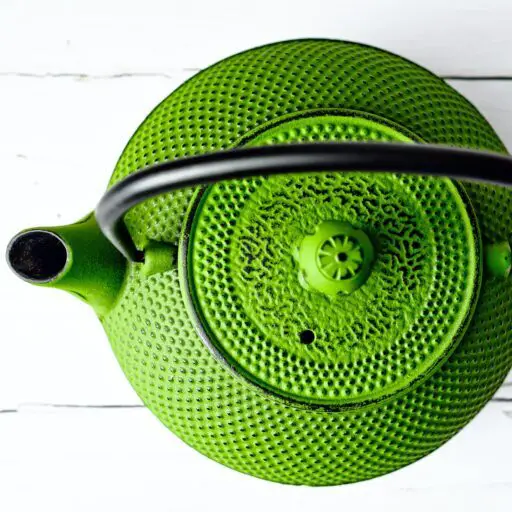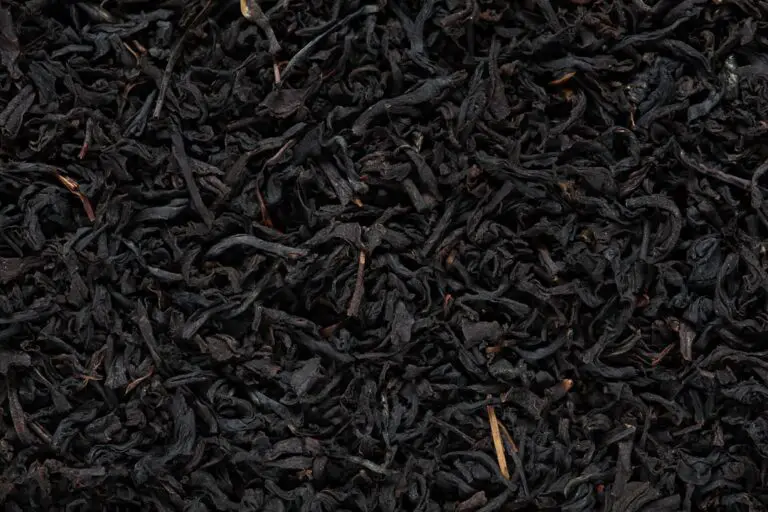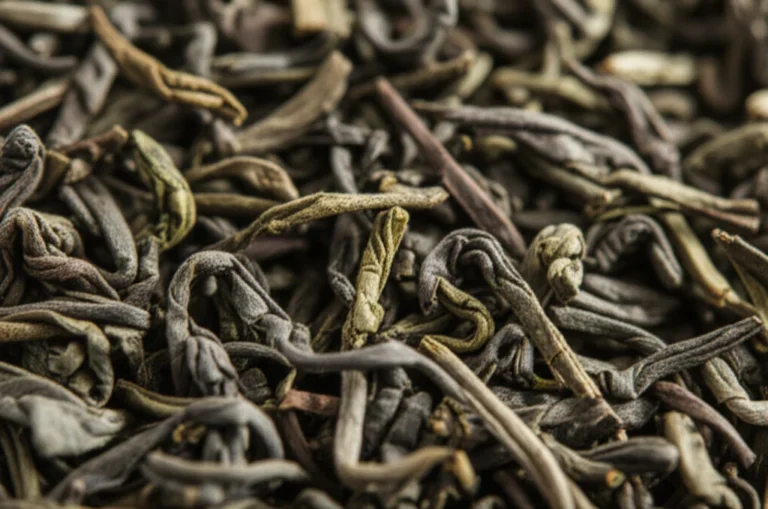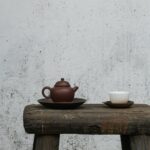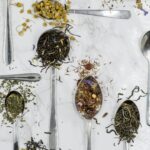Support our educational content for free when you purchase through links on our site. Learn more
Which Brand Sells the Most Tea? Top 9 Global Leaders in 2025 🍵
Have you ever wondered which tea brand truly dominates the global market? Is it the familiar Lipton you find in nearly every grocery aisle, or perhaps a regional favorite with a cult following? As tea lovers and expert tasters at Tea Brands™, we’ve brewed up the ultimate guide to uncover the top-selling tea brands worldwide in 2025. From historic giants like Twinings and Tetley to wellness innovators like Celestial Seasonings, we’ll spill the leaves on who’s pouring the most cups—and why.
Here’s a fun fact to steep on: over 2 billion people drink tea daily, making it the second most consumed beverage on Earth after water! But behind every cup is a story of tradition, marketing savvy, and evolving consumer tastes. Stick around as we reveal the top 9 brands that have mastered the art of selling tea globally, plus insider tips on choosing the perfect brew for your palate.
Key Takeaways
- Lipton leads globally with unmatched distribution and variety, making it the most widely sold tea brand.
- Tetley and Twinings hold strong regional dominance, especially in the UK and Commonwealth countries.
- Herbal tea pioneers like Celestial Seasonings have expanded the market with wellness blends.
- Ethical sourcing and innovation are increasingly important drivers for brand loyalty and growth.
- Choosing the best tea depends on your taste preferences—explore classics and specialty blends to find your perfect cup.
👉 Shop top tea brands:
- Lipton Tea on Amazon | Walmart
- Twinings Tea on Amazon | Twinings Official
- Celestial Seasonings Herbal Teas on Amazon | Walmart
Table of Contents
- ⚡️ Quick Tips and Facts
- 📜 The Grand Tapestry of Tea: A Brief History of Global Consumption Trends
- 🌍 Unveiling the Titans of Tea: Who Brews the Most Globally?
- 📊 Understanding Market Share: More Than Just a Cuppa
- 🏆 The Reigning Champions: Our Top Picks for Global Tea Brand Dominance
- 1. Lipton: The Ubiquitous Brew and Global Powerhouse
- 2. Tetley: A British Icon with Expansive Global Reach
- 3. Twinings: Steeped in Tradition, Innovation, and Royal Warrants
- 4. Celestial Seasonings: Pioneering Herbal Harmony in the US Market
- 5. Bigelow Tea: A Family-Owned Success Story Brewing Strong
- 6. Yorkshire Tea: A Regional Powerhouse with Growing International Appeal
- 7. Dilmah: Championing Single Origin Excellence and Ethical Sourcing
- 8. Starbucks (via Teavana & In-House Brands): The Specialty Tea Game Changer
- 9. Other Notable Contenders and Regional Favorites: A World of Flavor
- 📈 Beyond the Brew: Key Factors Driving Tea Brand Success and Market Leadership
- 📦 Distribution and Accessibility: Reaching Every Cup, Everywhere
- 📣 Marketing Prowess: Crafting Compelling Tea Stories
- 🔬 Innovation and Product Diversification: New Flavors, New Fans, New Formats
- 🌱 Sustainability and Ethical Sourcing: The Conscientious Consumer’s Choice
- 💖 Consumer Trends: Health, Wellness, and the Quest for Convenience
- 🧐 Our Expert Insights: Navigating the Bustling World of Tea Brands
- 🎉 Conclusion: The Ever-Evolving and Delightful Tea Landscape
- 🔗 Recommended Links: Dive Deeper into the World of Tea
- ❓ FAQ: Your Burning Tea Questions Answered by Our Experts
- 📚 Reference Links: Our Sources for the Perfect Brew
Here at Tea Brands™, we’ve spent countless hours—joyful, delicious hours, mind you—steeping, sipping, and scrutinizing teas from every corner of the globe. You’ve asked the big question: “Which brand sells the most tea?” and frankly, it’s a fantastic one! It’s like asking which star shines the brightest in a galaxy teeming with them. The answer is a fascinating blend of history, marketing muscle, and, of course, what’s actually inside the teabag. So, put the kettle on, get comfortable, and let’s spill the tea on the world’s biggest players.
⚡️ Quick Tips and Facts
Before we dive deep, here’s a quick, energizing shot of tea knowledge to get you started. When it comes to the largest tea brands in the world, the story is as rich and complex as a first-flush Darjeeling.
- The Global Giant: 🌏 While pinning down the single #1 seller can be tricky due to private company data, Lipton has historically held a massive global market share, making it the most recognized and widely available tea brand on the planet.
- A Thirsty World: Tea is the second most consumed beverage in the world, right after water. Over 2 billion people drink tea every day!
- Black Tea Dominance: ☕️ Black tea accounts for the majority of tea consumed globally, which is a big reason why brands that excel in classic black tea blends, like English Breakfast, often top the sales charts.
- The Rise of Wellness: 🌿 The demand for Herbal Tea and wellness blends is skyrocketing! Brands are rapidly innovating with ingredients like turmeric, ginger, and adaptogens to meet consumer interest in the Health Benefits of Tea.
- It’s Not Just Bags: While teabags offer convenience, the market for loose-leaf tea and ready-to-drink (RTD) bottled teas is enormous and continues to grow, shaking up the sales landscape.
📜 The Grand Tapestry of Tea: A Brief History of Global Consumption Trends
You can’t talk about who sells the most tea today without understanding how we all got so hooked on these lovely leaves in the first place. Tea’s journey is a real-life epic! It began in ancient China, whispered about in myths of emperors and medicinal discoveries. For centuries, it was a closely guarded secret, a luxurious art form.
Then, the Silk Road and burgeoning sea trade routes acted as the world’s first global delivery service, carrying precious tea leaves to every corner of the known world. It caused a stir in 17th-century Britain, fueled empires, and even sparked a revolution or two (remember the Boston Tea Party? 🇺🇸).
What’s fascinating to us as tasters is how these historical currents shaped today’s mega-brands. The British East India Company’s influence, for example, laid the groundwork for the Western world’s obsession with strong, black teas from India and Sri Lanka—a preference that brands like Tetley and Twinings built their empires on. The American penchant for convenience, on the other hand, helped propel the humble teabag—and brands like Lipton—to international stardom. Every cup you brew is a little sip of history!
🌍 Unveiling the Titans of Tea: Who Brews the Most Globally?
Alright, let’s get to the main event! Identifying the undisputed champion of tea sales is like trying to catch steam—the exact figures are often proprietary and shift with market trends. As the experts at Statista note, detailed market data often requires a premium subscription, which highlights the challenge. However, by looking at brand presence, revenue reports, and market penetration, we can paint a very clear picture of the industry’s heavyweights.
📊 Understanding Market Share: More Than Just a Cuppa
When we talk about “selling the most,” we’re really talking about market share. This isn’t just about the number of boxes sold; it’s about a brand’s total sales revenue compared to the entire tea market’s revenue. A brand can sell billions of budget-friendly teabags, while another might sell fewer units of a premium loose-leaf but capture a similar market share. It’s a delicate dance of volume, value, and variety.
🏆 The Reigning Champions: Our Top Picks for Global Tea Brand Dominance
Here they are—the brands you’ll find in more cupboards, cafes, and checkout lines than any others. This isn’t just a list; it’s a guided tour through the world of tea, as seen by our expert tasting team. For a deeper dive into these giants, check out our Tea Brand Guides.
1. Lipton: The Ubiquitous Brew and Global Powerhouse
You simply cannot discuss the world’s biggest tea brands without putting Lipton at the top. It’s the Coca-Cola of the tea world. Founded by Sir Thomas Lipton in the 1880s, his mission was to make tea accessible to everyone, not just the wealthy. And boy, did he succeed.
- Our Expert Take: Lipton’s signature “Yellow Label” is a benchmark for standard black tea. It’s consistent, brisk, and straightforward. While it might not send a connoisseur’s heart aflutter, its reliability is its greatest strength. Their expansion into iced teas and flavored green teas has kept them incredibly relevant.
- Features & Benefits:
- ✅ Unmatched Global Distribution: You can find Lipton tea in over 150 countries. It’s everywhere.
- ✅ Affordability & Accessibility: It’s a dependable, budget-friendly option for a daily brew.
- ✅ Wide Product Range: From classic black tea to green teas, herbal infusions, and a massive ready-to-drink iced tea business.
- Drawbacks:
- ❌ Flavor Profile: For seasoned tea drinkers, the standard blend can taste a bit one-dimensional or astringent.
- ❌ Sourcing: While they’ve made strides with Rainforest Alliance certification, the sheer scale of their operation means the tea comes from countless sources, lacking the specific terroir of smaller brands.
👉 Shop Lipton on:
2. Tetley: A British Icon with Expansive Global Reach
A true British institution, Tetley has been warming hearts since 1837. They were pioneers, being one of the first brands to sell tea in teabags in the UK. Their focus on a strong, robust, and full-bodied cuppa has made them a household name, particularly in the UK, Canada, and India.
- Our Expert Take: Tetley’s “British Blend” is the quintessential builder’s brew. It’s designed to be bold and stand up well to milk and sugar. It’s a no-nonsense, get-the-job-done kind of tea. We appreciate its malty character and invigorating strength.
- Features & Benefits:
- ✅ Classic, Robust Flavor: Delivers that strong, traditional black tea taste many people crave.
- ✅ Innovative Teabag Design: They introduced the round teabag and later the “drawstring” bag, focusing on user convenience.
- ✅ Strong Market Presence: A dominant player in key Commonwealth tea markets.
- Drawbacks:
- ❌ Less Nuance: Similar to Lipton, the focus is on consistency and strength rather than delicate, complex flavors.
- ❌ Limited Specialty Offerings: While they have green and herbal options, their brand identity is overwhelmingly tied to standard black tea.
👉 Shop Tetley on:
3. Twinings: Steeped in Tradition, Innovation, and Royal Warrants
Walking the line between mass-market appeal and specialty quality, Twinings is a masterclass in branding. Established in 1706, they’ve been operating from the same shop in London for over 300 years and hold a prestigious Royal Warrant. They are often credited with popularizing Earl Grey tea.
- Our Expert Take: Twinings is the gateway brand for many people venturing into the world of specialty tea. Their Earl Grey and English Breakfast are global standards. We’re consistently impressed by their ability to introduce new and interesting Specialty Blends and herbal infusions while maintaining the quality of their classics.
- Features & Benefits:
- ✅ Incredible Variety: A massive range of black, green, herbal, and fruit-infused teas. There’s a Twinings for every palate.
- ✅ Trusted Quality: The brand carries an air of sophistication and reliability. You generally know you’re getting a decent cup.
- ✅ Rich Heritage: Their long history and royal connection are powerful marketing tools that resonate with consumers.
- Drawbacks:
- ❌ Inconsistent Blends: With such a vast portfolio, some blends are fantastic, while others can feel a bit generic or artificially flavored.
👉 Shop Twinings on:
4. Celestial Seasonings: Pioneering Herbal Harmony in the US Market
Shifting gears from traditional black tea, Celestial Seasonings carved out a massive niche and essentially created the modern herbal tea market in the United States. Their iconic Sleepytime blend is a cultural touchstone.
- Our Expert Take: What a success story! They made herbal tea cool, with whimsical packaging and memorable names. Their blends are creative and comforting. While some purists might scoff, there’s no denying the deliciousness and effectiveness of blends like Sleepytime or Red Zinger. They are masters of creating a mood in a mug.
- Features & Benefits:
- ✅ Herbal Tea Pioneers: They dominate the herbal infusion space in North America.
- ✅ Iconic Blends: Sleepytime is a beloved, best-selling blend known by millions.
- ✅ Caffeine-Free Focus: A go-to brand for those seeking flavorful, caffeine-free options.
- Drawbacks:
- ❌ Flavor Intensity: Some of their fruitier blends can rely heavily on hibiscus or natural flavorings, which may not appeal to everyone.
👉 Shop Celestial Seasonings on:
5. Bigelow Tea: A Family-Owned Success Story Brewing Strong
A beloved American brand, Bigelow is a testament to family passion. Founded by Ruth Campbell Bigelow in 1945, their first and most famous blend, “Constant Comment,” is still a top seller.
- Our Expert Take: Bigelow offers fantastic value and quality. Their teas are flavorful, and the foil pouch for each bag makes a genuine difference in freshness. “Constant Comment,” with its notes of orange rind and sweet spice, is a unique and comforting classic. They have a loyal following for a reason.
- Features & Benefits:
- ✅ Freshness: The individual foil wrappers protect the tea from air and moisture, preserving its flavor.
- ✅ Family-Owned Pride: There’s a sense of care and quality that comes with their family-run ethos.
- ✅ Great Value: Consistently good tea that’s very reasonably priced.
- Drawbacks:
- ❌ Limited International Presence: Primarily a North American brand, it lacks the global reach of Lipton or Twinings.
👉 Shop Bigelow Tea on:
6. Yorkshire Tea: A Regional Powerhouse with Growing International Appeal
“A proper brew.” That’s the motto, and it’s the truth. While traditionally a UK favorite, Yorkshire Tea’s reputation for making an exceptionally good, strong, and flavorful teabag has earned it a cult following worldwide.
- Our Expert Take: We have a soft spot for Yorkshire Tea. For a standard teabag, the quality is outstanding. It’s rich, smooth, and incredibly satisfying. Their “Yorkshire Gold” variety is a noticeable step up and a team favorite for a morning cuppa. Their clever and charming marketing has also been a huge factor in their growth.
- Features & Benefits:
- ✅ Superior Flavor: Widely regarded as one of the best-tasting standard black tea bags available.
- ✅ Ethical Sourcing: They are committed to sustainability and have strong relationships with their growers.
- ✅ Brand Loyalty: People who drink Yorkshire Tea are passionate about it.
- Drawbacks:
- ❌ Availability: Can be harder to find and more expensive outside of the UK.
👉 Shop Yorkshire Tea on:
7. Dilmah: Championing Single Origin Excellence and Ethical Sourcing
Founded by Merrill J. Fernando in Sri Lanka, Dilmah’s philosophy is built on the concept of “single origin” tea. This means the tea is unblended and comes from a specific region in Sri Lanka (formerly Ceylon), preserving its unique character.
- Our Expert Take: Dilmah is a breath of fresh air. Their commitment to authentic, unblended Ceylon tea is commendable. You can truly taste the difference that single-origin makes. It’s a fantastic brand for experiencing the pure, bright, and crisp flavors of Ceylon tea. Their ethical “tea with a heart” approach is also a huge plus.
- Features & Benefits:
- ✅ Single Origin Focus: Offers a genuine taste of place (terroir).
- ✅ Ethical Commitment: A portion of profits goes back into the community through their foundation.
- ✅ Freshness: They pride themselves on packing their tea garden-fresh at the source.
- Drawbacks:
- ❌ Less Variety in Blends: Their strength is pure Ceylon tea, so you won’t find the vast array of flavored blends that Twinings offers.
👉 Shop Dilmah on:
8. Starbucks (via Teavana & In-House Brands): The Specialty Tea Game Changer
While you might think of them for coffee, Starbucks is a colossal player in the tea market. After acquiring Teavana, they integrated many of its popular blends into their stores and now sell their own branded teas. Their sheer number of global storefronts makes them one of the biggest tea sellers by volume.
- Our Expert Take: Starbucks did for specialty tea what it did for coffee: it made it accessible and trendy. Their iced teas and tea lattes are incredibly popular. While they no longer have standalone Teavana stores, the influence remains. They introduce millions of people to tea concepts beyond the basic teabag.
- Features & Benefits:
- ✅ Massive Accessibility: Available in tens of thousands of locations worldwide.
- ✅ Innovative Drinks: Popularized drinks like the Chai Tea Latte and various iced tea infusions.
- ✅ Introduces Tea to a Wide Audience: Acts as a gateway for coffee drinkers to explore tea.
- Drawbacks:
- ❌ Focus on Sweetened Drinks: The emphasis is often on sugary, milk-based tea beverages rather than the pure tea itself.
- ❌ Inconsistent Quality: The quality of a brewed cup can vary significantly from store to store.
9. Other Notable Contenders and Regional Favorites: A World of Flavor
The world of tea is vast! Brands like Harney & Sons have built a fiercely loyal following by focusing on high-quality loose-leaf teas and unique blends. As their founder, John Harney, intended, they aim to “provide a great quality product at a reasonable price.” Their Hot Cinnamon Spice is legendary for a reason! Then you have regional powerhouses like PG Tips in the UK and Tata Tea in India, which are giants in their home markets. Niche brands like Teacurry focus specifically on the wellness segment, offering expertly curated herbal blends. It’s a vibrant, competitive, and delicious landscape!
📈 Beyond the Brew: Key Factors Driving Tea Brand Success and Market Leadership
So, what separates the titans from the rest of the tea chest? It’s not just about having a tasty product. Becoming a global leader is a complex recipe.
📦 Distribution and Accessibility: Reaching Every Cup, Everywhere
This is the #1 factor. Lipton’s genius wasn’t just in the tea; it was in creating a supply chain that could get that tea onto a shelf in virtually any village, town, or city in the world. If a customer can’t find you, they can’t buy you.
📣 Marketing Prowess: Crafting Compelling Tea Stories
Think of Twinings‘ association with British royalty or Celestial Seasonings‘ whimsical, naturalistic branding. These brands don’t just sell tea; they sell an experience, a feeling, a story. This emotional connection builds incredible brand loyalty.
🔬 Innovation and Product Diversification: New Flavors, New Fans, New Formats
The tea market is not static. Tastes change. Brands that succeed are constantly innovating. This includes:
- New Flavors: Introducing exciting new herbal and fruit blends.
- New Formats: The rise of “pyramid” tea bags for better infusion, ready-to-drink bottles, and even tea pods for single-serve machines.
- Wellness Focus: Tapping into the Health Benefits of Tea by creating blends for sleep, energy, or digestion.
🌱 Sustainability and Ethical Sourcing: The Conscientious Consumer’s Choice
Today’s consumers care about where their tea comes from. Brands that invest in certifications like Rainforest Alliance, Fair Trade, or B Corp, and are transparent about their supply chain, are earning the trust and loyalty of a new generation of tea drinkers.
💖 Consumer Trends: Health, Wellness, and the Quest for Convenience
The modern tea drinker is often looking for more than just a caffeine hit. They want a beverage that can help them relax, focus, or get a dose of antioxidants. At the same time, life is busy. The success of teabags, bottled iced teas, and quick-brew options shows that convenience is, and always will be, king.
🧐 Our Expert Insights: Navigating the Bustling World of Tea Brands
Phew! That’s a lot to take in. As your dedicated team at Tea Brands™, we want to leave you with some practical advice. How do you use this information to find the perfect tea for you?
💡 Choosing Your Perfect Brew: What Our Team Looks For
Forget about who sells the most for a second. The best brand is the one that makes the tea you love to drink. Here’s what we suggest:
- Start with the Classics: Try an English Breakfast from a few different brands, like Twinings, Yorkshire Tea, and Bigelow. See which one you prefer. This helps you understand your palate for black tea.
- Explore the Aromatics: Grab a box of Twinings Earl Grey and Bigelow’s Constant Comment. This will show you if you enjoy teas with added citrus or spice notes.
- Dive into Herbals: Pick up a box of Celestial Seasonings Sleepytime. It’s the perfect introduction to the world of relaxing, caffeine-free herbal infusions.
- Read the Box: Look at the ingredients. Is it just “black tea,” or does it specify the origin? Are there “natural flavors” or real pieces of fruit and spice? Making smart choices at the grocery store can be tricky, which is why the first YouTube video embedded in this article is so helpful for learning what to look for and what to avoid.
🔮 The Future of Tea: Emerging Trends and Brands to Steep In
What’s next for the world of tea? We’re seeing a huge surge in interest in matcha and other powdered teas, the rise of functional beverages with added nootropics and adaptogens, and a growing appreciation for single-estate, artisanal teas. Keep an eye on smaller, direct-to-consumer brands that are shaking things up with incredible sourcing and unique stories. The next global titan might just be a small startup today! For more on up-and-coming names, be sure to check out our Tea Brand Spotlights.
🎉 Conclusion: The Ever-Evolving and Delightful Tea Landscape
So, who sells the most tea? While Lipton stands tall as the global titan thanks to its unparalleled distribution and brand recognition, the world of tea is far richer and more diverse than a single name can capture. Brands like Tetley, Twinings, and Yorkshire Tea have carved out their own loyal followings by focusing on tradition, quality, and regional preferences. Meanwhile, innovators like Celestial Seasonings and Bigelow have expanded the market with herbal and specialty blends, tapping into the wellness wave.
From our expert perspective at Tea Brands™, the best-selling brand isn’t always the best for your personal taste or health goals. The market leaders excel in accessibility and consistency, but smaller brands like Dilmah bring authenticity and ethical sourcing to the table, while Starbucks’ tea offerings have revolutionized how tea is consumed globally.
If you’re hunting for your perfect cup, start with the classics from these big brands, then explore the specialty blends and wellness teas that suit your lifestyle. Remember, the “most sold” tea is simply the most brewed — but the “best” tea is the one that makes you smile with every sip.
Ready to explore? Your next favorite brew awaits!
🔗 Recommended Links: Dive Deeper into the World of Tea
👉 Shop the Top Tea Brands:
- Lipton: Amazon | Walmart
- Tetley: Amazon | Walmart
- Twinings: Amazon | Walmart | Twinings Official Website
- Celestial Seasonings: Amazon | Walmart
- Bigelow Tea: Amazon | Walmart | Bigelow Official Website
- Yorkshire Tea: Amazon | Walmart
- Dilmah: Amazon | Walmart | Dilmah Official Website
Books to Steep Yourself In:
- The Story of Tea: A Cultural History and Drinking Guide by Mary Lou Heiss & Robert J. Heiss — Amazon Link
- The Tea Enthusiast’s Handbook: A Guide to Enjoying the World’s Best Teas by Mary Lou Heiss — Amazon Link
- Tea: History, Terroirs, Varieties by Kevin Gascoyne et al. — Amazon Link
❓ FAQ: Your Burning Tea Questions Answered by Our Experts
What is the best-selling tea brand worldwide?
Lipton holds the crown as the best-selling tea brand globally, largely due to its extensive distribution network, affordable pricing, and wide product range. Its presence in over 150 countries and pioneering of the teabag format have made it a household name. However, sales figures can vary by region, and other brands like Tetley and Twinings dominate in specific markets.
Which company has the largest market share in the tea industry?
Unilever, the parent company of Lipton, commands the largest market share in the global tea industry. Their ability to combine scale, marketing, and innovation keeps them at the forefront. Other major players include Tata Consumer Products (owner of Tetley) and Associated British Foods (owner of Twinings). Market share fluctuates with consumer trends, especially as wellness teas and specialty blends gain traction.
What are the top tea brands known for quality and flavor?
Brands like Twinings, Dilmah, and Harney & Sons are renowned for quality and nuanced flavor profiles. Twinings offers a vast array of specialty blends and classic teas with consistent quality. Dilmah stands out for its single-origin Ceylon teas and ethical sourcing. Harney & Sons is praised for premium loose-leaf teas and innovative blends. These brands often appeal to tea connoisseurs and those seeking a refined experience.
How do popular tea brands compare in terms of variety and price?
| Brand | Variety Range | Price Range* | Notable Strengths |
|---|---|---|---|
| Lipton | Extensive (black, green, herbal, RTD) | Budget to mid-range | Accessibility, affordability |
| Tetley | Black, green, herbal | Budget to mid-range | Classic strong black teas |
| Twinings | Very wide (specialty blends, herbals) | Mid-range | Quality, heritage, innovation |
| Celestial Seasonings | Focus on herbal and wellness | Budget to mid-range | Herbal teas, caffeine-free blends |
| Bigelow | Moderate (black, herbal, specialty) | Budget to mid-range | Freshness, family-owned ethos |
| Yorkshire Tea | Black teas primarily | Mid-range | Robust flavor, ethical sourcing |
| Dilmah | Single origin Ceylon teas | Mid to premium | Authenticity, ethical sourcing |
*Prices vary by region and retailer.
How do tea brands address sustainability and ethical sourcing?
Many leading brands have adopted sustainability initiatives. For example, Lipton sources Rainforest Alliance Certified teas, and Yorkshire Tea has strong ethical sourcing commitments. Dilmah’s “Tea with a Heart” foundation supports community development. Consumers increasingly demand transparency, pushing brands to improve environmental and social responsibility.
What role does innovation play in the success of tea brands?
Innovation is crucial. Brands that diversify into ready-to-drink teas, pyramid bags for better infusion, and wellness blends with adaptogens or functional ingredients are capturing new markets. Starbucks’ tea beverages have popularized tea lattes and iced teas, expanding tea’s appeal beyond traditional drinkers.
📚 Reference Links: Our Sources for the Perfect Brew
- Lipton Official Website
- Tetley Official Website
- Twinings Official Website
- Celestial Seasonings Official Website
- Bigelow Tea Official Website
- Yorkshire Tea Official Website
- Dilmah Official Website
- Harney & Sons Fine Teas
- Statista: UK Leading Brands of Standard Tea in 2023
- National Geographic: The Story of Tea
We hope this comprehensive guide helps you navigate the vast and flavorful world of tea brands with confidence and curiosity. Happy steeping! 🍵
